I haven't provided detailed commentary on the US labour market for a while now. To…
Australian labour market – plodding along with no direction in sight
Today, the Australian Bureau of Statistics released the latest data – Labour Force, Australia, December 2018 – which reveals modest employment growth but a second consecutive month of full-time employment contraction. The moderate employment growth, however, was slightly higher than the weak growth in the labour force and unemployment fell marginally. The broad measure of labour underutilisation fell by 0.2 points to 13.3 per cent. The teenage labour market continued to deteriorate despite the positive employment growth. The current situation can best be characterised as plodding along with with no direction in sight. Other indicators are suggesting a slowdown in the next few months. What we can conclude is that the Australian labour market remains a considerable distance from full employment. There is clear room for some serious policy expansion at present.
The summary ABS Labour Force (seasonally adjusted) estimates for December 2018 are:
- Employment increased 21,600 (0.2 per cent) – full-time employment decreased 3,000 and part-time employment increased 24,600.
- Unemployment decreased 14,100 to 666,700.
- The official unemployment rate decreased 0.1 percentage points to 5.0 per cent.
- The participation rate decreased 0.1 pts to 65.6 per cent.
- Aggregate monthly hours worked increased 1.3 million hours (0.07 per cent).
- The monthly broad underutilisation estimates for December 2018 show that underemployment decreased by 0.1 points to 8.8 per cent (1,117 thousand). The total labour underutilisation rate (unemployment plus underemployment) fell by 0.2 points to 13.3 per cent. There were a total of 1,784.2 thousand workers either unemployed or underemployed.
Employment increased 21,600 in December 2018
Employment growth was relatively weak this month although full-time employment fell for the second consecutive month.
Total employment increased 21,600 (0.2 per cent) – full-time employment decreased 3,000 and part-time employment increased 24,600.
The moderate employment growth, however, exceed the growth in the labour force (0.2 per cent) and unemployment fell as a consequence.
The following graph shows the month by month growth in full-time (blue columns), part-time (grey columns) and total employment (green line) for the 24 months to December 2018 using seasonally adjusted data.
The zig-zag pattern where employment growth has regularly been around zero remains evident.
The following table provides an accounting summary of the labour market performance over the last six months. As the monthly data is highly variable, this Table provides a longer view which allows for a better assessment of the trends.
These aggregate changes signify a moderate labour market performance.
Given the variation in the labour force estimates, it is sometimes useful to examine the Employment-to-Population ratio (%) because the underlying population estimates (denominator) are less cyclical and subject to variation than the labour force estimates. This is an alternative measure of the robustness of activity to the unemployment rate, which is sensitive to those labour force swings.
The following graph shows the Employment-to-Population ratio, since February 2008 (the low-point unemployment rate of the last cycle).
It dived with the onset of the GFC, recovered under the boost provided by the fiscal stimulus packages but then went backwards again as the last Federal government imposed fiscal austerity in a hare-brained attempt at achieving a fiscal surplus.
The ratio began rising in December 2014 which suggested to some that the labour market had bottomed out and would improve slowly as long as there are no major policy contractions or cuts in private capital formation.
The series turned again as overall economic activity weakened.
The ratio rose by 0.1 points in December 2018 to 62.4 per cent but remains well below pre-GFC peak in April 2008 of 62.9 per cent.
To put the current monthly performance into perspective, the following graph shows the average monthly employment change for the calendar years from 2005 to 2018.
It is clear that after some lean years, 2017 was a much stronger year if total employment is the indicator.
It is also clear that the labour market has weakened considerably over 2018.
To provide a longer perspective, the following graphs shows the average monthly changes in Total employment (upper panel), and Full-time and Part-time employment (lower panel) in thousands since 1978 (when the current dataset began).
The interesting result is that during recessions or slow-downs, it is full-time employment that takes the bulk of the adjustment. Even when full-time employment growth is negative, part-time employment usually continues to grow.
Unemployment decreased 14,100 to 666,700
The official unemployment rate decreased 0.1 percentage points to 5.0per cent as a result of the slow labour force growth.
The following graph shows the national unemployment rate from January 1980 to December 2018. The longer time-series helps frame some perspective to what is happening at present.
Assessment:
1. It is still 0.1 points above the level it fell to as a result of the fiscal stimulus (which was withdrawn too early) and 1.1 point above the level reached before the GFC began.
2. There is clearly still considerable slack in the labour market that could be absorbed with fiscal stimulus.
Broad labour underutilisation down 0.2 points to 13.3 per cent
The results based on the Monthly data for December 2018 are (seasonally adjusted):
1. Underemployment fell by 0.1 points to 8.8 per cent (1,117 thousand)
2. The total labour underutilisation rate (unemployment plus underemployment) fell by 0.2 points to 13.3 per cent.
3. There were a total of 1,784.2 thousand workers either unemployed or underemployed.
The following graph plots the seasonally-adjusted underemployment rate in Australia from January 1980 to the December 2018 (blue line) and the broad underutilisation rate over the same period (green line).
The difference between the two lines is the unemployment rate.
You can see the three cyclical peaks corresponding to the 1982, 1991 recessions and the more recent downturn.
The other difference between now and the two earlier cycles is that the recovery triggered by the fiscal stimulus in 2008-09 did not persist and as soon as the ‘fiscal surplus’ fetish kicked in in 2012, things went backwards very quickly.
The two earlier peaks were sharp but steadily declined. The last peak fell away on the back of the stimulus but turned again when the stimulus was withdrawn.
If hidden unemployment (given the depressed participation rate) is added to the broad ABS figure the best-case (conservative) scenario would see a underutilisation rate well above 15 per cent at present. Please read my blog post – Australian labour underutilisation rate is at least 13.4 per cent – for more discussion on this point.
Teenage labour market deteriorates in December 2018
Total teenage employment fell by 8.6 thousand jobs in December 2018 with full-time teenage employment falling by 4 thousand and total part-time employment falling by 4.6 thousand.
The following graph shows the distribution of net employment creation in the last month by full-time/part-time status and age/gender category (15-19 year olds and the rest)
Over the last 12 months, teenagers have gained 27.5 thousand (net) jobs overall while the rest of the labour force have gained 241 thousand net jobs.
Teenagers have gained around 10.2 per cent of the total net employment growth over the last 12 months but represent around 7.3 per cent of the total labour force. So they are doing slightly better when we take scale into account.
The following graph shows the change in aggregates over the last 12 months.
In terms of the current cycle, which began after the last low-point unemployment rate month (February 2008), the following results are relevant:
1. Since February 2008, there have been 2,066.5 thousand (net) jobs added to the Australian economy but teenagers have lost a 67.4 thousand over the same period.
2. Since February 2008, teenagers have lost 106.9 thousand full-time jobs (net).
3. Even in the traditionally, concentrated teenage segment – part-time employment, teenagers have gained onl 39.5 thousand jobs (net) even though 1,028.8 thousand part-time jobs have been added overall.
To put the teenage employment situation in a scale context (relative to their size in the population) the following graph shows the Employment-Population ratios for males, females and total 15-19 year olds since February 2008.
You can interpret this graph as depicting the loss of employment relative to the underlying population of each cohort. We would expect (at least) that this ratio should be constant if not rising somewhat (depending on school participation rates).
The absolute loss of jobs reported above has impacted more on males than females.
The male ratio has fallen by 8.53 percentage points since February 2008, the female ratio has fallen by 4.2 percentage points and the overall teenage employment-population ratio has fallen by 6.4 percentage points.
The other statistic relating to the teenage labour market that is worth highlighting is the decline in the participation rate since the beginning of 2008 when it peaked in February at 61.4 per cent.
In December 2018, the participation rate was 54.7 per cent (down by 0.8 percentage points on the previous month).
However, the difference between the 2008 level, amounts to an additional 92 thousand teenagers who have dropped out of the labour force as a result of the weak conditions since the crisis.
If we added them back into the labour force the teenage unemployment rate would be 24.7 per cent rather than the official estimate for December 2018 of 16.2 per cent.
Some may have decided to return to full-time education and abandoned their plans to work. But the data suggests the official unemployment rate is significantly understating the actual situation that teenagers face in the Australian labour market.
Overall, the performance of the teenage labour market leaves a lot to be desired. The decline in full-time employment for teenagers was particularly worrying.
This situation doesn’t rate much priority in the policy debate, which is surprising given that this is our future workforce in an ageing population. Future productivity growth will determine whether the ageing population enjoys a higher standard of living than now or goes backwards.
I continue to recommend that the Australian government immediately announce a major public sector job creation program aimed at employing all the unemployed 15-19 year olds, who are not in full-time education or a credible apprenticeship program.
Hours worked increased 1.3 million hours (0.07 per cent)
The following graph shows the monthly growth (in per cent) over the last 24 months.
The dark linear line is a simple regression trend of the monthly change – which depicts a very flat trend – distorted somewhat by the outlier in May 2017 (the trend would have been more downward without that positive spike).
You can see the pattern of the change in working hours is also portrayed in the employment graph – zig-zagging across the zero growth line although less so in 2017.
The last several months have shown weakness.
Conclusion
My standard monthly warning: we always have to be careful interpreting month to month movements given the way the Labour Force Survey is constructed and implemented.
The December data reveals modest employment growth but a second consecutive month of full-time employment contraction.
The moderate employment growth, however, was slightly higher than the weak growth in the labour force and unemployment fell marginally.
The broad measure of labour underutilisation fell by 0.2 points to 13.3 per cent.
The teenage labour market continued to deteriorate despite the positive employment growth.
My overall assessment is:
1. The current situation can best be characterised as plodding along with no direction in sight.
2. Other indicators are suggesting a slowdown in the next few months.
3. The Australian labour market remains a considerable distance from full employment. There is clear room for some serious policy expansion at present
That is enough for today!
(c) Copyright 2019 William Mitchell. All Rights Reserved.
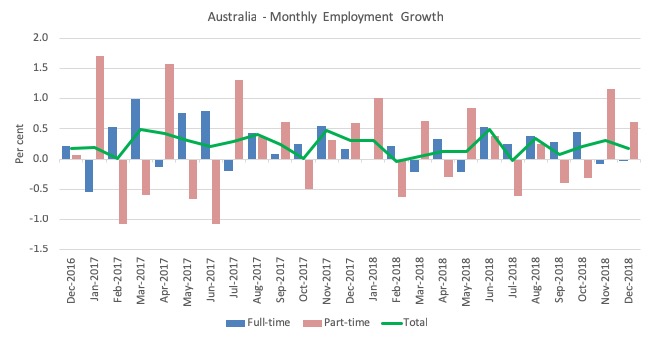
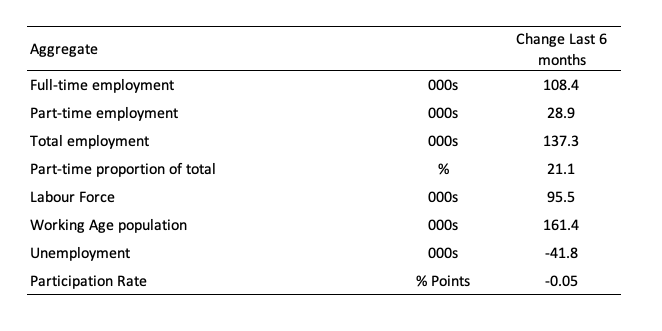
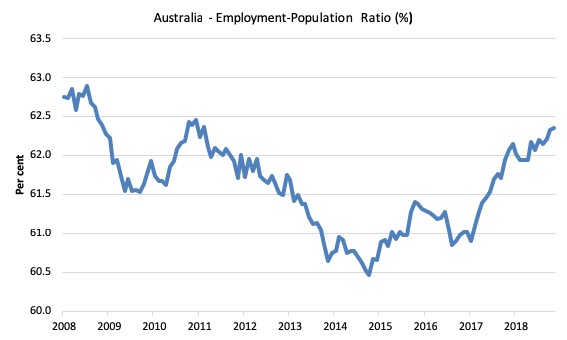
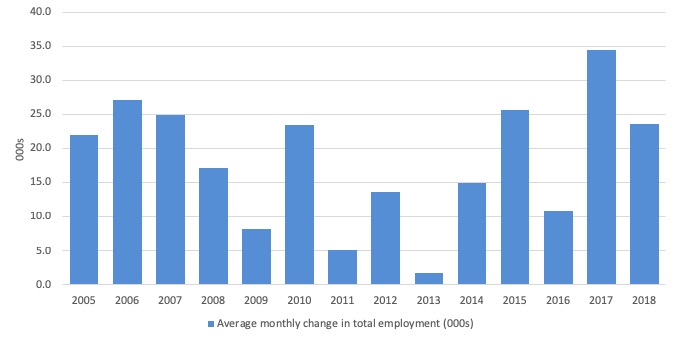
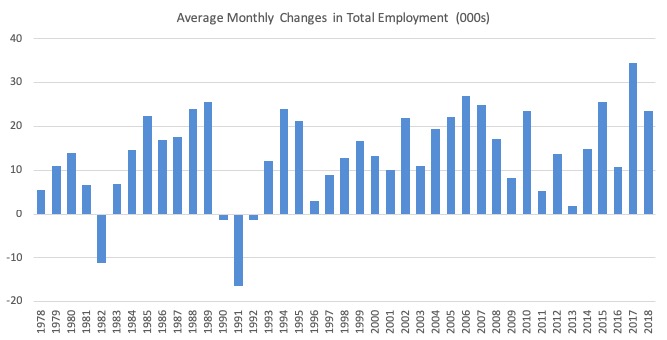
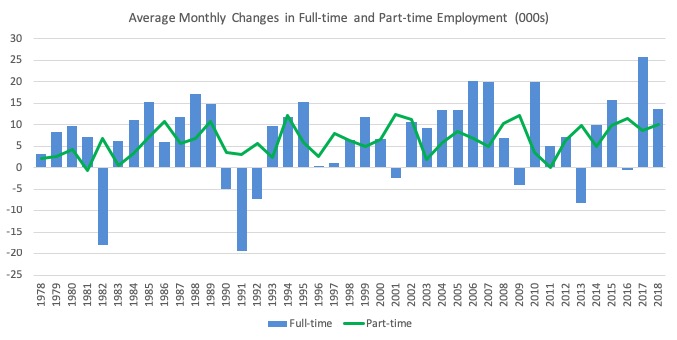
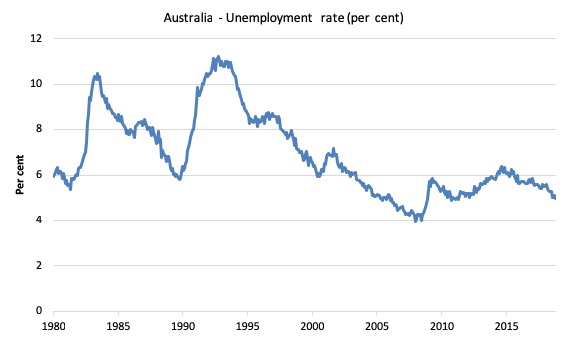
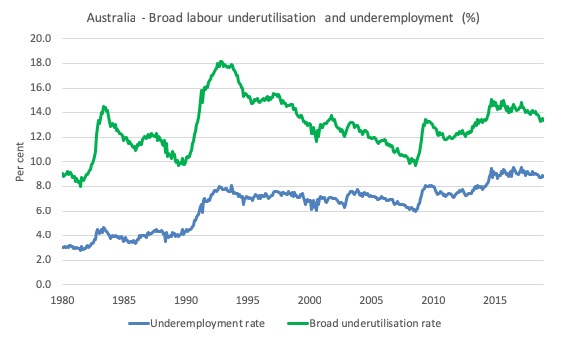
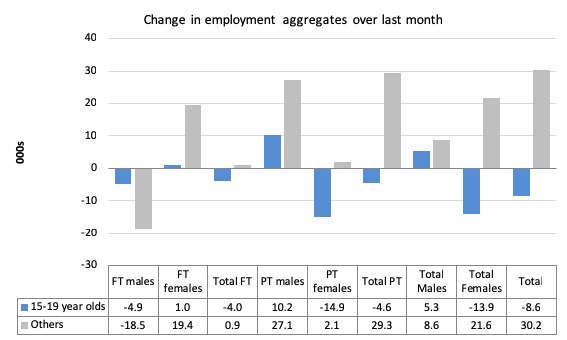
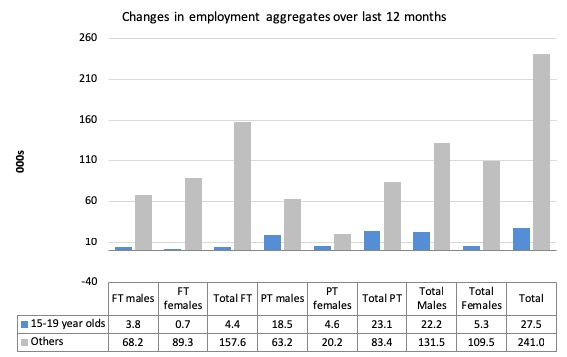
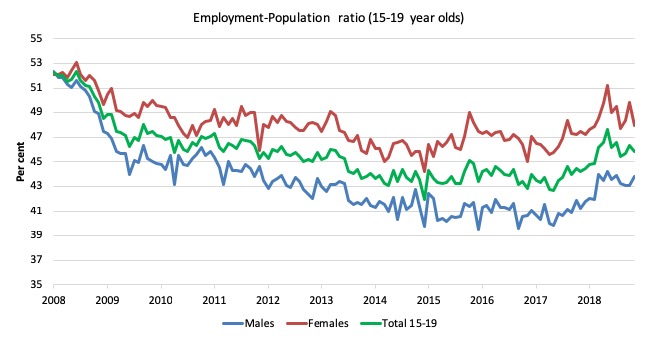
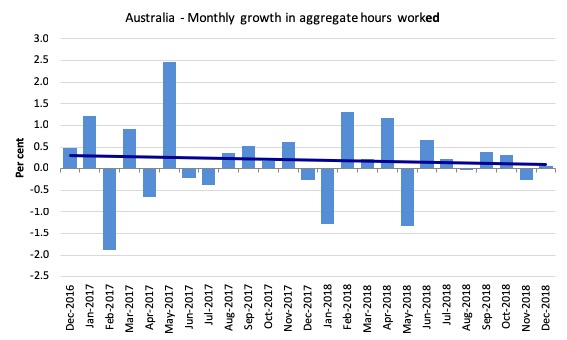
Polity, Australia and that MMT lens.
Yesterday Matt from PDX brought up the question of political quality in his reference to MMT implementation. Bill, as he is wont to do, pointed out that MMT is a lens – to view the operational political framework, whatever it is.
Matt ,might assume therefore that the MMT lens is used as a filter to interpret the quality of a particular polity- and Bill, he may have noticed, is highly critical of governments’ that fail to achieve full-employment. Australia being a typical example.
It is, of course, employment that is the common (but not exclusive) denominator in the filter process, something that is paramount in all government manifestos. But it is almost impossible to protect that aim by avoiding fluctuations (and upheavals) that disrupt peoples lives and lifestyles.
The natural reaction of government is to employ all manner of rhetoric to lift some of the burden of responsibility that it has willingly embraced. The current cynical reaction of voters is heightened by the media who cannot resist hyping everything with exaggerated headlines.
Capitalism has its own brand of shyster but it does have a straightforward defence in pointing to the abstract influence of the market.
Yes, it would help if everyone knew enough of economic theory to put things in perspective. I can only suggest Matt that you try to have a reasoned argument with ordinary folk.